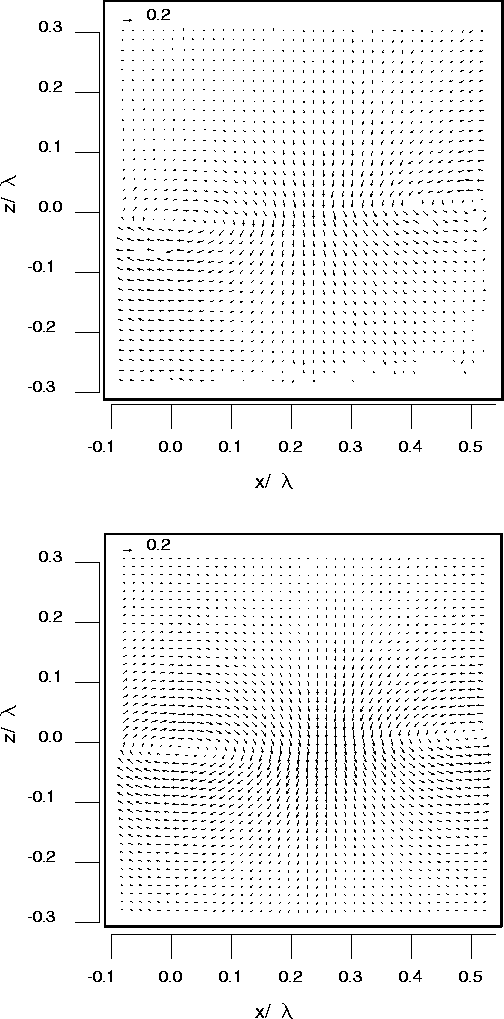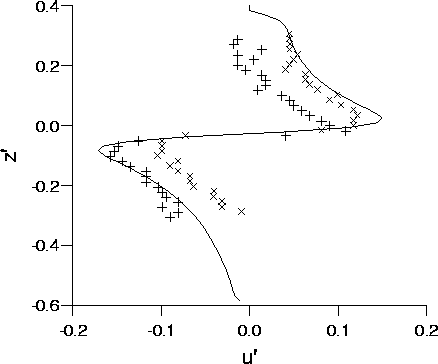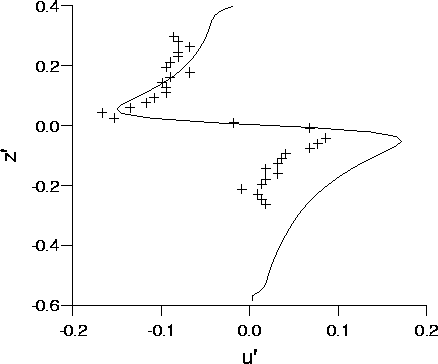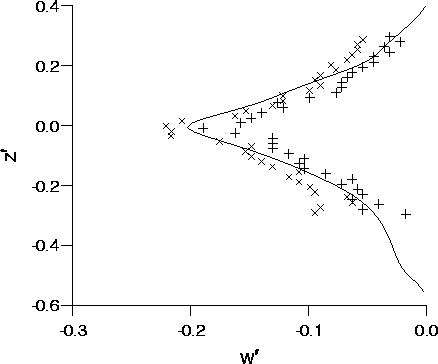
Figure 8-12: Vector plot of the dimensionless velocity
Figure 8-11: Vector plot of the dimensionless velocity
The experimental results [10] are shown in figures 8-11 and 8-13

Figure 8-12: Vector plot of the dimensionless velocity ![]() for wave (b).
for wave (b).
Figure 8-11: Vector plot of the dimensionless velocity ![]() for wave (a).
for wave (a).

Figure 8-14: Vector plot of the dimensionless velocity ![]() for wave (b).
for wave (b).
Figure 8-13: Vector plot of the dimensionless velocity ![]() for wave (a).
for wave (a).
at two different times. The simulated
results are shown in figures 8-12 and 8-14 for
areas with the same dimensionless size. The separation between the simulated
results plotted is 16lu. The results plotted
are the dimensionless velocities, ![]() . The
axis have been picked so that z = 0 is the mwl, as before, and
x = 0 is at a trough. When comparing the simulation results and
the experimental results it should be realised that the spacing between the
vectors is different. The separation between the experimental results is
0.0125m, giving about 59 points per wavelength in both directions. The
simulation results are plotted every 16 sites. That gives 64 vectors
per wavelength in the x-direction and 74 vectors per wavelength in the
z-direction. Thus, since the dimensionless areas are the same in both
plots, the simulated results have slightly more vectors in the
horizontal direction and considerably more in the vertical direction. This
means that the length of the vectors should be compared and not
the closeness of packing.
. The
axis have been picked so that z = 0 is the mwl, as before, and
x = 0 is at a trough. When comparing the simulation results and
the experimental results it should be realised that the spacing between the
vectors is different. The separation between the experimental results is
0.0125m, giving about 59 points per wavelength in both directions. The
simulation results are plotted every 16 sites. That gives 64 vectors
per wavelength in the x-direction and 74 vectors per wavelength in the
z-direction. Thus, since the dimensionless areas are the same in both
plots, the simulated results have slightly more vectors in the
horizontal direction and considerably more in the vertical direction. This
means that the length of the vectors should be compared and not
the closeness of packing.
The velocity profile was found for the experimental and the
simulation results. The horizontal profile is shown in figure 8-15
for the results at the wave trough and in figure 8-16 at the
wave crest. The vertical velocity profile at ![]() , the
midpoint between the crest and the trough, is shown in figure
8-17.
, the
midpoint between the crest and the trough, is shown in figure
8-17.

Figure: The horizontal component of the dimensionless velocity
u' = u/c as a function of the dimensionless length ![]() for the two troughs shown in figure 8-11
for the two troughs shown in figure 8-11 ![]() and figure 8-13 (+). The solid line represents the simulation results.
and figure 8-13 (+). The solid line represents the simulation results.

Figure: The horizontal component of the dimensionless velocity
u' = u/c as a function of the dimensionless length ![]() for the crest shown in figure 8-13 (+). The solid
line represents the simulation results.
for the crest shown in figure 8-13 (+). The solid
line represents the simulation results.

Figure: The vertical component of the dimensionless velocity
w' = w/c as a function of the dimensionless length ![]() at
at ![]() shown in figure 8-11
shown in figure 8-11 ![]() and figure 8-13 (+). The solid line represents the simulation results.
and figure 8-13 (+). The solid line represents the simulation results.
The vertical velocities, displayed in figure 8-17, show good agreement between the simulation results and the experimental results. There is clearly some degree of uncertainty in the experimental results. The horizontal results, shown in figures 8-15 and 8-16, are qualitatively similar, however quantitatively there are some discrepancies. In each of the three sets of measurements the horizontal velocities in one of the fluids agree well, while in the other fluid the magnitude of the experimental results are somewhat smaller than the simulation results. As figure 8-15 demonstrates it is not always the same fluid which contains the discrepancy. This effect can also be seen in figures 8-11 and 8-13 where the magnitude of the horizontal velocity above and below the troughs and crest are different. The difference between the two sets of experimental results in figure 8-15 and the fact that theory predicts only a small difference close to the interface, suggest that the discrepancy is due to some problem with the experimental results rather than the simulations. There are a number of sources which can introduce errors into the experimental results. The most likely cause is the image shifting system which is imposing a horizontal shift velocity onto the flow [94]. This velocity is considerably larger than the flow velocity and may be slightly irregular. Despite these errors the vertical profile is seen to fit well with the experimental results. The horizontal velocity shows the same qualitative features and the comparison is as good as can be expected, given the uncertainties in the experimental results. It is interesting to note that despite the difference in the Reynolds number there is little difference is the shape of the horizontal velocity close to the interface. This could be partly due to the difference in the interface thicknesses.